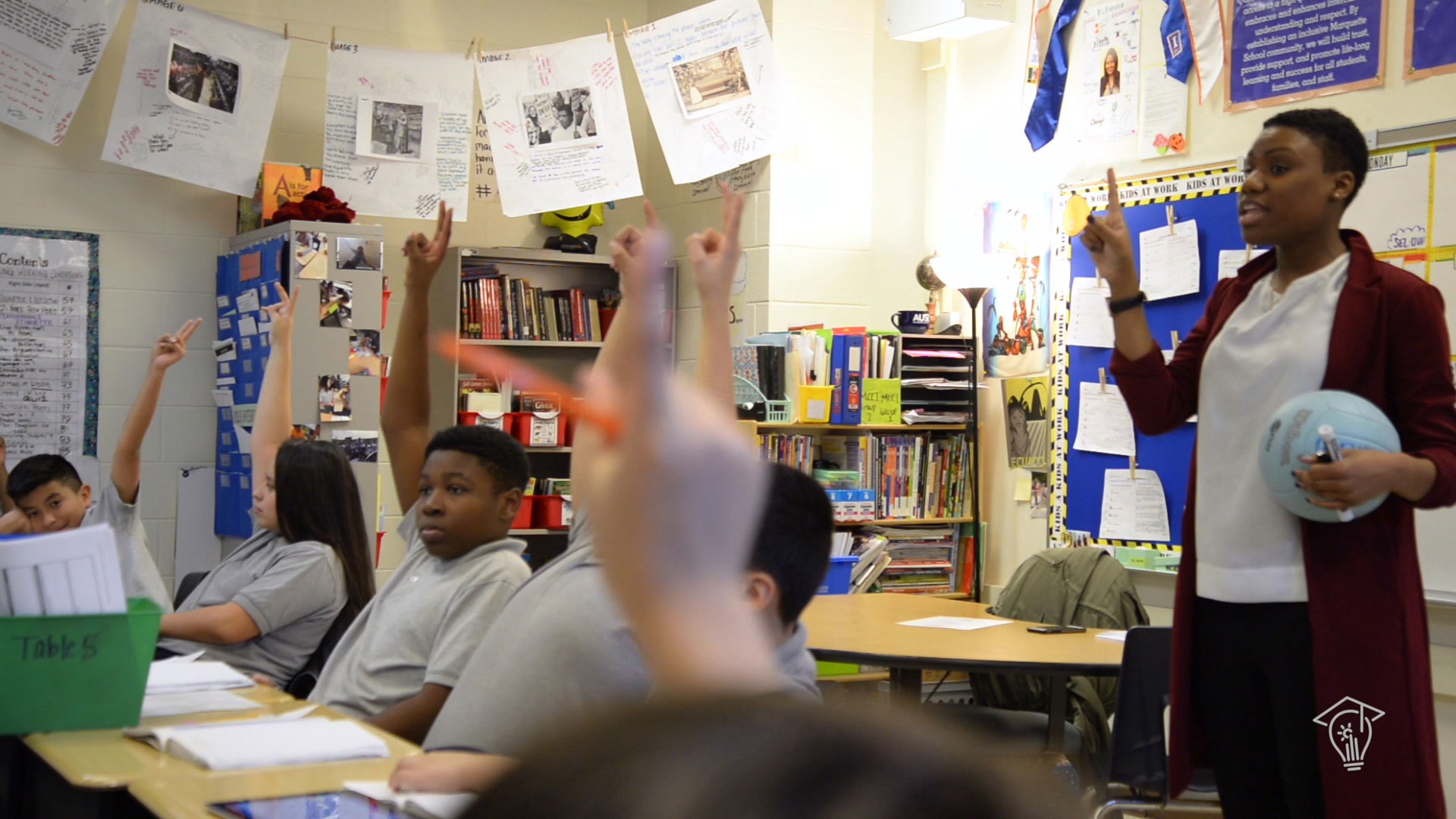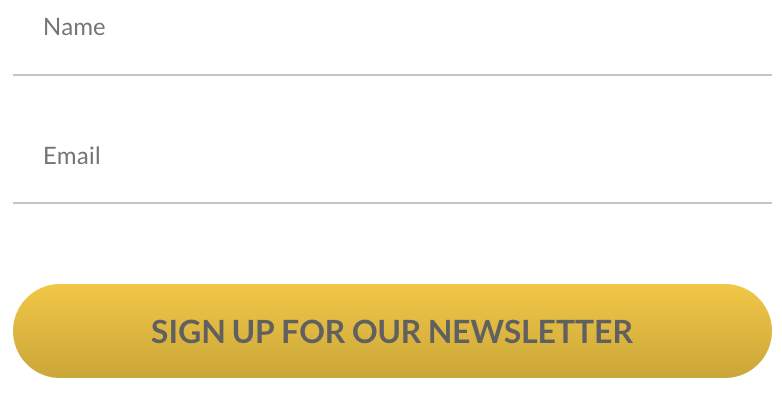[vc_row][vc_column][vc_video link=”https://youtu.be/YFY65ZDbkrQ”][vc_column_text]Here Kiara Sims, Chicago Teacher Residency Class of 2018, talk about how AUSL’s lead-with-data model drew her to the Chicago Teacher Residency.[/vc_column_text][/vc_column][/vc_row][vc_row 0=”” css=”.vc_custom_1515001625117{padding-bottom: 50px !important;}”][vc_column width=”2/3″][vc_column_text]As one of the five pillars that makes up our innovation framework, leading with data is key to making sure we have tools in place to help our students thrive in their schools and communities. Without it, we have no way of evaluating what works and what doesn’t in meeting the needs of our students.
Here we’ll deconstruct what we mean when we say we lead with data, and provide a concrete example of how it has improved our network of schools.[/vc_column_text][/vc_column][vc_column width=”1/3″][stm_icon_box view_style=”style-1″ text_alignment=”center” icon_color=”custom” title=”Lead with data” descr=”We implement, nurture, and refine the data systems and culture to enhance how we serve our students.” icon_fontawesome=”stm-icon stm-icon-check-list” icon_color_custom=”#68b9d0″ icon_size=”60px” css=”.vc_custom_1515000629781{border-top-width: 2px !important;border-right-width: 2px !important;border-bottom-width: 2px !important;border-left-width: 2px !important;border-left-color: #68b9d0 !important;border-left-style: solid !important;border-right-color: #68b9d0 !important;border-right-style: solid !important;border-top-color: #68b9d0 !important;border-top-style: solid !important;border-bottom-color: #68b9d0 !important;border-bottom-style: solid !important;}”][/vc_column][/vc_row][vc_row 0=”” css=”.vc_custom_1515001640135{padding-bottom: 25px !important;}”][vc_column width=”1/2″][stm_title title_tag=”h2″ title_color=”blue” sep_color=”green” sep_enable=”true” title=”Continuous Improvement at AUSL”][/stm_title][vc_column_text 0=””]AUSL’s continuous improvement process is centered on ongoing cycles of real-time, data-driven, action-focused feedback and intervention. It allows us to continuously address problems of practice that impede impact.
It pivots on four key elements:[/vc_column_text][/vc_column][vc_column width=”1/2″][vc_single_image image=”5043″ img_size=”full” alignment=”center”][/vc_column][/vc_row][vc_row 0=”” css=”.vc_custom_1515001741661{padding-bottom: 20px !important;}”][vc_column width=”1/3″][vc_single_image image=”5042″ img_size=”full” alignment=”center”][/vc_column][vc_column width=”2/3″][stm_title title_tag=”h3″ title_color=”custom” title=”Define and Plan” title_color_custom=”#617bd3″][/stm_title][vc_column_text 0=””]We start with defining data that we believe contribute to student achievement and growth, and are predictive of successful post-secondary outcomes.
This includes attendance, grade-level proficiency and growth, and other on-track measures. In addition, we also target school and teacher performance using Chicago’s School Quality Rating Policy and AUSL’s internally-developed school culture, climate, teacher instruction, and curriculum expectations.
Using this data we then plan our teaching and learning strategies for instruction, classroom management, school management, and management of our network of schools.[/vc_column_text][/vc_column][/vc_row][vc_row 0=”” css=”.vc_custom_1515001726766{padding-top: 20px !important;padding-bottom: 20px !important;}”][vc_column width=”2/3″][stm_title title_tag=”h3″ title_color=”custom” title=”Execute and Measure” title_color_custom=”#6daf3d”][/stm_title][vc_column_text 0=””]After we execute these strategies, we gather quantitative and qualitative data through our network performance management team, school leadership, and school-based/curriculum coaches or Mentor Resident Coaches. These supports help us form initial insights and dive deeper where necessary using our proprietary tools such as dashboards and performance calculators.
In this phase, quantitative data, gathered and organized by our performance management team, is primarily used to identify high-level areas for further discussion and exploration, while qualitative data is used for personalized coaching — every one of our teachers receives regular feedback from their Principals and Mentor Resident, school-based, or curriculum coaches. Even our Principals are provided personalized coaching from their Directors of School Leadership (similar to network superintendents).[/vc_column_text][/vc_column][vc_column width=”1/3″][vc_single_image image=”5041″ img_size=”full”][/vc_column][/vc_row][vc_row 0=”” css=”.vc_custom_1515001712851{padding-top: 20px !important;padding-bottom: 20px !important;}”][vc_column width=”1/3″][vc_single_image image=”5040″ img_size=”full” alignment=”center”][/vc_column][vc_column width=”2/3″][stm_title title_tag=”h3″ title_color=”custom” title=”Analyze” title_color_custom=”#f7c075″][/stm_title][vc_column_text 0=””]To identify specific interventions, our performance management team and coaching leaders partner with school leaders during monthly Collaboratives. During these meetings, school and instructional leaders analyze data, discuss root causes of the challenges at hand, reflect, and develop action plans for updated or new teaching and learning strategies.[/vc_column_text][/vc_column][/vc_row][vc_row 0=”” css=”.vc_custom_1515001694611{padding-top: 20px !important;padding-bottom: 20px !important;}”][vc_column width=”2/3″][stm_title title_tag=”h3″ title_color=”custom” title=”Adapt” title_color_custom=”#f46562″][/stm_title][vc_column_text 0=””]Interventions are implemented and reinforced through Professional Learning Teams that deploy targeted professional development regularly to teachers. Our cycle restarts to measure the impact of new strategies.[/vc_column_text][/vc_column][vc_column width=”1/3″][vc_single_image image=”5039″ img_size=”full” alignment=”center”][/vc_column][/vc_row][vc_row 0=”” css=”.vc_custom_1515001986882{padding-top: 25px !important;}”][vc_column][stm_title title_tag=”h2″ title_color=”blue” sep_color=”green” sep_enable=”true” title=”Case Study: A Common Curricular Resource”]Adopting and Adapting A Common Curricular Resource[/stm_title][vc_column_text 0=””]This continuous improvement process was used to help AUSL identify the need for and implement a common curricular resource across our network of 31 neighborhood public schools, called Engage AUSL.[/vc_column_text][/vc_column][/vc_row][vc_row 0=”” css=”.vc_custom_1515094171985{padding-top: 10px !important;padding-bottom: 10px !important;}”][vc_column 0=”” width=”1/4″][vc_single_image image=”5046″ img_size=”full” alignment=”center”][/vc_column][vc_column width=”3/4″][vc_column_text 0=””]Define, Plan, Execute, and Measure: To measure the success of our work and our impact on student outcomes, some of the central data we regularly track include the following: student achievement and growth, student on-track measures, and components of each school’s School Quality Rating Policy (SQRP) Performance score.
All of our teaching and learning practices are planned to drive these measures and outcomes.[/vc_column_text][/vc_column][/vc_row][vc_row 0=”” css=”.vc_custom_1515094180836{padding-top: 10px !important;padding-bottom: 10px !important;}”][vc_column 0=”” width=”1/4″][vc_single_image image=”5040″ img_size=”full” alignment=”center”][/vc_column][vc_column width=”3/4″][vc_column_text]Analyze: In pursuing these outcomes, challenges and opportunities that emerged included:
- Student growth was positive however attainment gains were not as robust as needed.
- Teachers and leaders were struggling to address this attainment challenge without simply selecting less rigorous curricular resources. Additionally, this pressure limited the space and time for teachers to deepen their practice and focus on overall development.
- New research asserted a rigorous and standards-based curriculum was an important lever to improve student attainment.
[/vc_column_text][/vc_column][/vc_row][vc_row 0=”” css=”.vc_custom_1515094192057{padding-top: 10px !important;padding-bottom: 10px !important;}”][vc_column 0=”” width=”1/4″][vc_single_image image=”5039″ img_size=”full” alignment=”center”][/vc_column][vc_column width=”3/4″][vc_column_text]Adapt: In order to address these challenges, after much consideration and critical discussion, AUSL leadership decided to identify, adopt, and adapt a unified, guaranteed and viable curricular resource and assessment approach, called Engage AUSL in School Year 2015-2016.[/vc_column_text][/vc_column][/vc_row][vc_row 0=”” css=”.vc_custom_1515094202583{padding-top: 10px !important;padding-bottom: 10px !important;}”][vc_column 0=”” width=”1/4″][vc_single_image image=”5040″ img_size=”full” alignment=”center”][/vc_column][vc_column width=”3/4″][vc_column_text]Analyze: After implementation of Engage AUSL, as we monitored progress and assessed data through our continuous improvement process, we discovered some resulting challenges and opportunities:
- The pacing and navigation of the current curricular resource posed a challenge to teachers’ implementation in the classroom.
- The curricular resource and assessments were not as aligned as they could be.
[/vc_column_text][/vc_column][/vc_row][vc_row 0=”” css=”.vc_custom_1515094192057{padding-top: 10px !important;padding-bottom: 10px !important;}”][vc_column 0=”” width=”1/4″][vc_single_image image=”5039″ img_size=”full” alignment=”center”][/vc_column][vc_column width=”3/4″][vc_column_text]Adapt: To address these challenges, today, school leaders and coaches continue to improve the usability and pacing of the material and drive closer alignment between the resource and assessments to accelerate the impact of the resource on student outcomes.[/vc_column_text][/vc_column][/vc_row][vc_row 0=””][vc_column 0=””][stm_title title_tag=”h2″ title_color=”blue” sep_color=”green” sep_enable=”true” title=”Reflection: Our Model In Practice”]Adopting and Adapting A Common Curricular Resource[/stm_title][vc_column_text 0=””]Our journey in implementing our Engage AUSL curricular resource is one example of a large-scale change emerging from this continuous improvement process (a change of this size is rare, and is thoroughly analyzed before implementation). We continue to measure, analyze, and adapt the strategies supporting the resource to ensure it is driving the impact that we want to see on student outcomes.
Smaller scale school or student-level interventions resulting from the continuous improvement process occur regularly and more rapidly every day in our classrooms.[/vc_column_text][/vc_column][/vc_row][vc_row][vc_column][stm_btn_simple btn_style=”flat” btn_color=”custom” btn_link=”url:http%3A%2F%2Fwww.auslchicago.org%2Fwp-content%2Fuploads%2F2018%2F01%2FLead-With-Data-Newsletter-Jan-2018.pdf||target:%20_blank|” btn_link_text=”Printer-Friendly Version” btn_color_custom_bg=”#1e7fc3″ btn_color_custom_hover_bg=”#000000″ btn_color_custom_text=”#ffffff” btn_color_custom_hover_text=”#ffffff”][/vc_column][/vc_row]
















